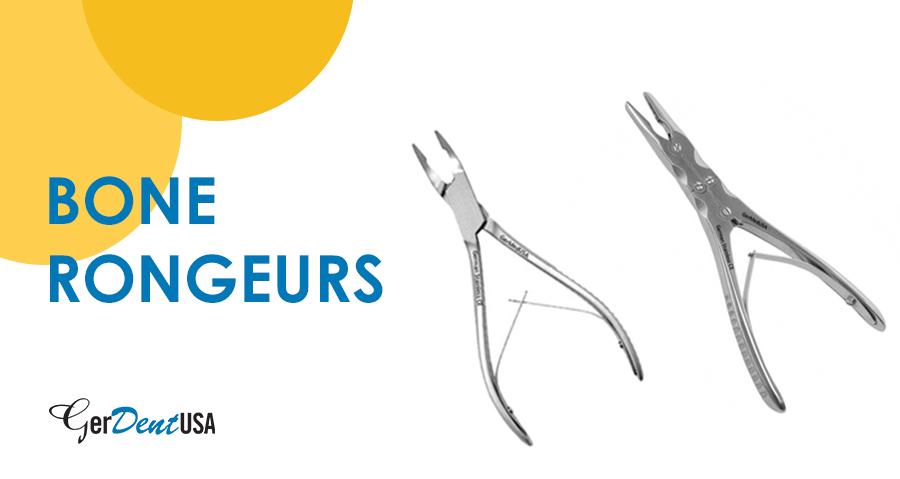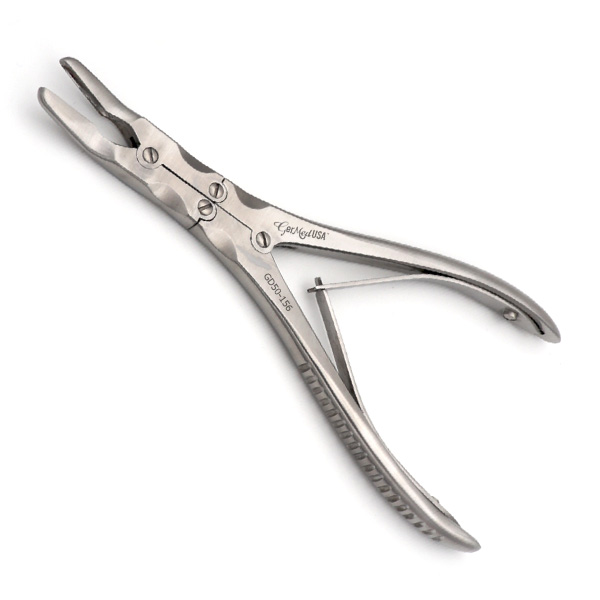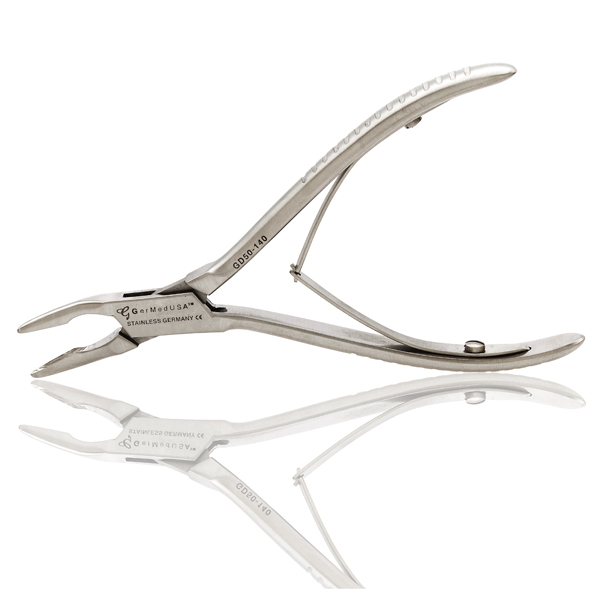Dentists use many instruments to perform daily clinical tasks. Hence, dentistry instruments need to be sharp, efficient, versatile and, durable. High-quality dental surgical equipment should be used for a successful treatment procedure. Poorly crafted instruments make it difficult for the operator to perform complicated dental procedures. Also, inefficient instruments can make the operator fall behind schedule. Hence instrument quality is of the utmost importance when it comes to providing high-quality treatment.
We can classify surgical instruments according to their functions. Cutting instruments, Grasping instruments, and Retracting instruments are some basic categories to classify. Bone Rongeurs are dentistry instruments that come under the category of cutting instruments.
Bone Rongeurs are instruments that come in use for trimming away excess bone during an oral surgical procedure. It is a versatile and unique tool that has a scoop-shaped tip to cut and contour alveolar bone. After exodontia, sometimes thick bony spicules need to be trimmed away to restore gingival anatomy. Here, bone rongeurs play an essential role in cutting away the extra bone. Some examples of bone rongeurs include, Beyers bone rongeurs, Freidman bone rongeurs and Blumenthal bone rongeurs.
The Beyers bone rongeurs come into use specifically for modification and handling of the bone. The jaws of the bone rongeur are cup-shaped, which makes it easy for the instrument to scoop up the bone. It comes into use for removing sharp edges of the bone after extraction. Rongeurs have a spring mechanism with their handles. They have a sharp working end to ensure proper bone cutting during the procedure.
Instrument Grasping:
A palm grasp comes into use with the bone rongeurs. In other words, it is held like a plier for performing surgical procedures. The instrument is held in the palm of an operator, with the thumb on one handle and all other fingers are on the opposite handle of this dental instrument.
Instrument Design:
Bone rongeurs are made of high-quality stainless steel that is lightweight and durable. The instrument has serrated jaws and a spring handle. This allows it to remain open while inactivated. The instrument's steel body is easy to maintain and allows for the excellent strength of the tool. Bone rongeurs are heavy-duty surgical instruments that come in use for “gnawing” the bone.
There are two primary designs for the bone rongeur. One is the side cutting design, and the other is the end cutting design. Blumenthal rongeurs have an end-cutting design. They come into use for most dentoalveolar procedures. They can easily remove large amounts of bone significantly and efficiently.
Some Don’t with the Rongeurs:
It is not advised to remove huge chunks of bone in one bite. Small amounts of bone should be removed with many bites. Other than that, these instruments should not come into use for removing teeth. While using the Rongeurs, it is essential to take care of the surrounding soft tissues as there is a high chance of soft tissue damage while the instrument is activated. Hence, cheeks and lips should be carefully retracted to ensure no damage.
Other Uses of Rongeurs:
Bone rongeurs not only come into use for Oral surgical purposes, but they also come into use for other surgical procedures as well. They come into use in neurosurgery for opening up the skull. They also come in frequent use in Orthopedic surgeries for trimming and contouring the bone. Some examples of orthopedic rongeurs include the double-action rongeur, single-action bone rongeur, and IVD rongeurs.
All in all, bone rongeurs are efficient, versatile instruments that come into use for contouring and trimming of the bone. We have a range of sharp-edged instruments that have self-opening technology. This is to prevent fatigue in the operator's arm while the instrument is in use.
Instrument Care and Handling:
Instruments need proper cleaning and sterilization so they can last longer and provide the greatest functionality. The instruments need to be cleaned immediately after use. Rinsing with water removes all blood, debris, and body fluids. Instruments are then sterilized in an autoclave to get rid of the bacteria and for reuse.
Instruments also need a periodic examination to ensure that they are fit for purpose. They should be carefully examined for signs of dullness or if the instrument's locking system is fully functional. Hence, proper inspection of instruments before use is very important. This is to ensure that they are in good condition and can serve with their most excellent efficiency.
We also offer customization of dental surgical equipment. We encourage all practicing doctors to come up with innovative designs that they think might benefit the surgical equipment industry. Our experience in the industry has made us the best manufacturers and suppliers of surgical equipment. Our craftsmen are dedicated and passionate. We strive to serve the healthcare industry today and in the future. Sometimes, many practicing doctors find traditional tools hard to work with. Hence, we offer customization of products so the healthcare industry can benefit from modern designs and styles for the surgical equipment being sold.



